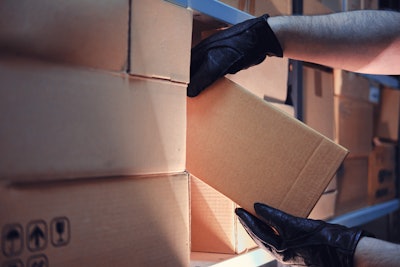
A report from CargoNet, a Verisk business, shows a stabilizing theft landscape, evolving tactics among organized crime groups, and increased targeting of high-value and ultra-high-value goods.
"The NYC metro area is emerging as both a primary location for theft activity and a destination for stolen goods," says Keith Lewis, VP, operations at CargoNet. "Organized crime groups are exploiting the region’s dense logistics network and proximity to major consumer markets."
Key takeaways:
· CargoNet recorded 772 cargo theft events across the United States and Canada in Q3 2025—a 1% increase compared to Q3 2024 and a 10% decrease from Q2 2025. While incident volume remained relatively stable, the financial impact surged to record levels.
· The total value of stolen goods in Q3 2025 reached $111.88 million, driven by organized crime groups targeting high-value shipments of enterprise computer hardware, cryptocurrency mining equipment, and copper products. The average stolen shipment value doubled to $336,787, up from $168,448 in Q3 2024, clear evidence that cargo thieves are becoming more strategic in selecting targets.
· California and Texas—historically high-theft states—saw modest year-over-year increases of 11% and 12%, respectively. However, the most dramatic shift occurred in the New York City metropolitan area, where New Jersey theft incidents surged 110% and Pennsylvania rose 33%.
· CargoNet’s analysis shows organized crime groups are in a transitional phase, adapting to anti-fraud tools deployed across the logistics industry. While overall activity remained relatively static year-over-year and declined modestly from Q2 2025, behavioral shifts within these networks signal a recalibration that supply chain stakeholders must monitor closely.
· Some groups are abandoning complex schemes—such as proof-of-delivery fraud and authority takeovers—in favor of simpler, more direct thefts of unattended, loaded trailers.
· Conversely, other groups are refining their fraud tactics to bypass security measures.
· In Q3, CargoNet witnessed criminal groups leverage social engineering techniques to obtain granular shipment details like the specific brokerage handling the shipment, the assigned motor carrier, and the names and contact information of individual points of contact at both the brokerage and carrier level. As the industry enters the final quarter of 2025, CargoNet anticipates that organized crime groups will continue refining their tactics to stay ahead of security measures and evade detection.
· Q3 saw dramatic increases in theft of specific commodities: meat and seafood products rose by 189% from 18 events in Q3 2024 to 52 events in Q3 2025; and copper saw nearly 5 times growth (10 -> 47 events).
· CargoNet also documented significant targeting of enterprise servers, components, and cryptocurrency mining hardware—shipments often valued in the millions yet transported as standard dry goods, making them highly vulnerable.
· Food and beverage commodities led all categories with 170 theft events, followed by household goods (92) and metals (65). As the holiday season approaches, CargoNet noted a modest uptick in thefts of games and toys.
"As criminal tactics evolve, so must our collective defense," says Lewis. "The supply chain security challenge requires industry-wide collaboration, enhanced information sharing protocols, and a commitment to staying ahead of emerging threats."




















